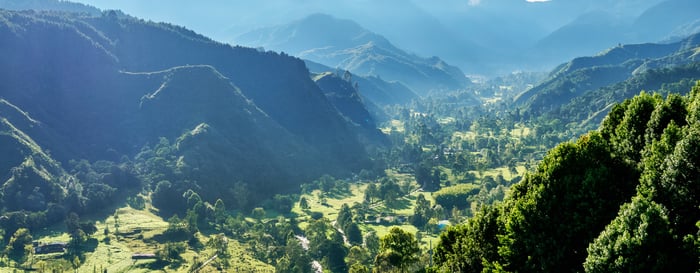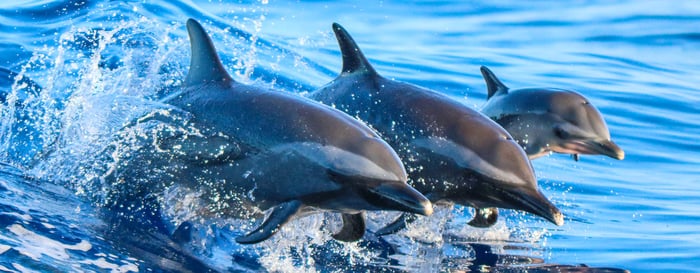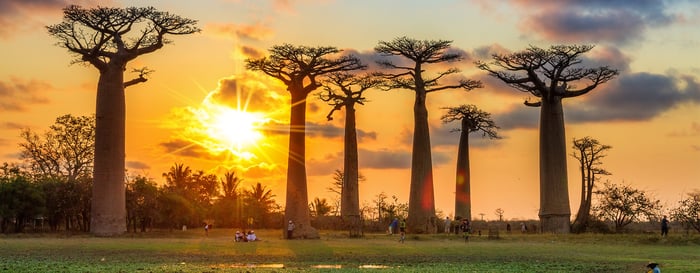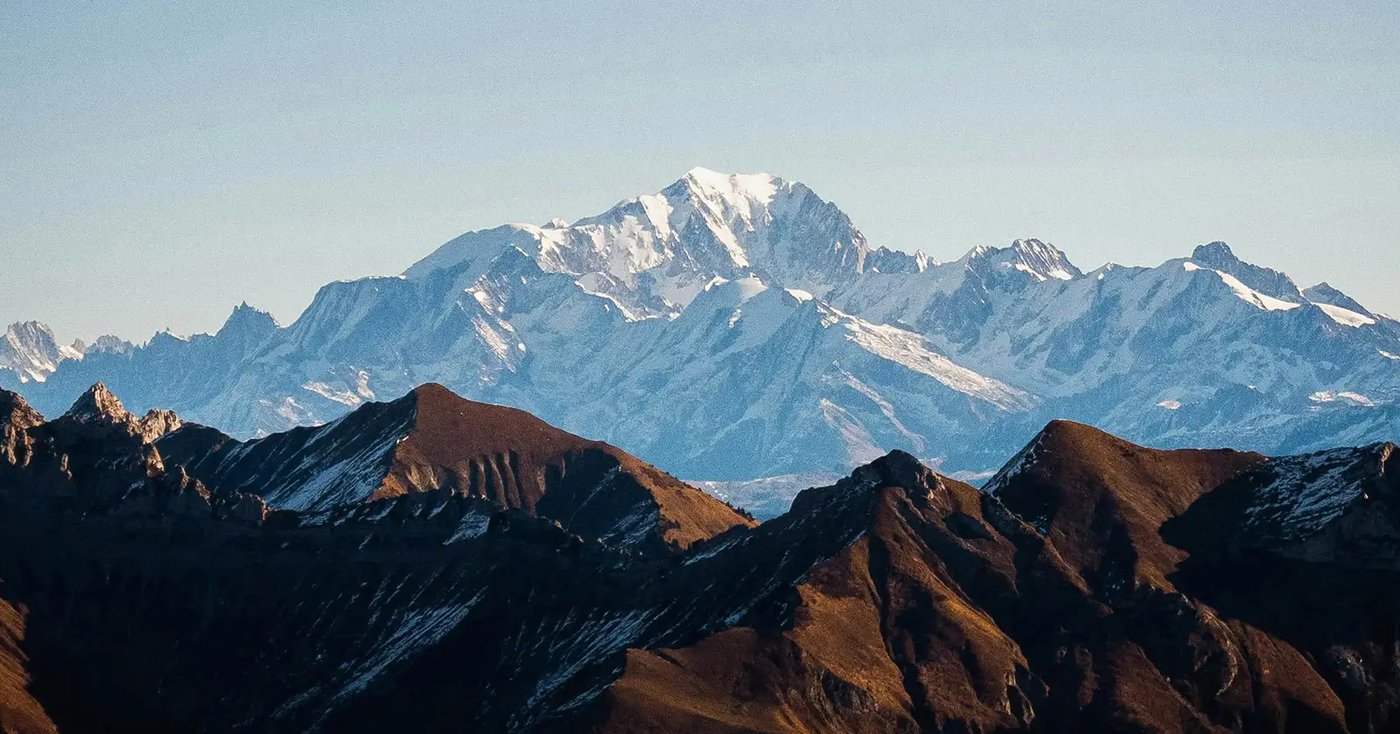Scrambling up a rockfall, more than 5,000m above sea level, I could only agree. There wasn’t much in my daypack. Just snacks, camera, flasks of water, poured boiling so they wouldn’t freeze, and spare layers to protect against the sub-zero wind that whistles through the Himalayas’ Cho-La Pass. But it felt like 25kg of rock.
“It’s the altitude,” I said. “It’ll feel normal once we’re down the other side.”
We had chosen a longer and more challenging route than normal to Everest Base Camp, accompanied by our porter-guide Nir. The standard trail goes in and out along one path and, even in a chilly Himalayan December, it was surprisingly busy. Yak teams, mule trains and porters burdened with provisions – in one case whole tree trunks – streamed along it, as well as a smattering of low-season trekkers.
Our route had taken us up the staggeringly beautiful Gokyo Valley. The Cho-La, a stark glacier pass between cliffs topped with teetering wedges of snowpack, was our path to the Khumbu Valley, and Everest Base Camp.
Puffing, we settled into a depression in the rock, cracked the thin layer of ice that had already formed in our flasks, and washed down a simple lunch with icy water. We had been walking for five hours, since shortly before sunrise, and there were still five more to go.
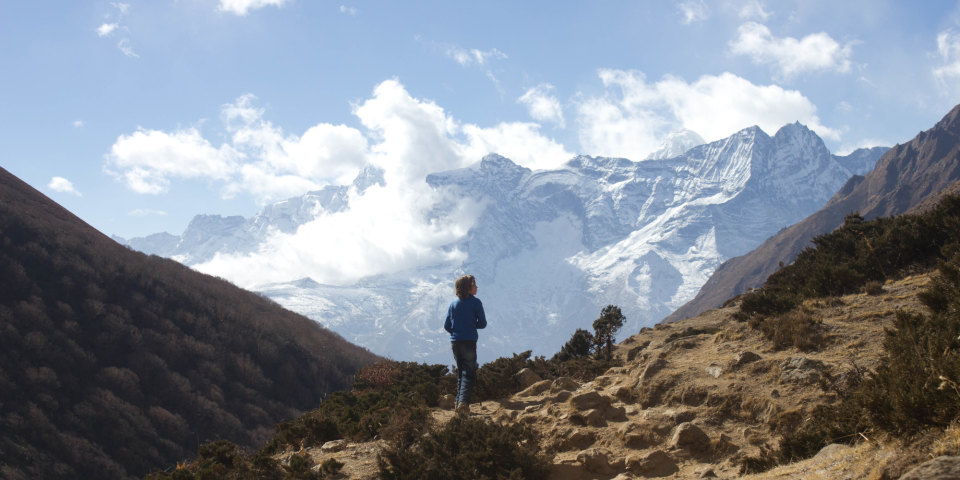
Nir equipped us with “Nepalese crampons”, strips of sacking to tie around our boots that add grip on the undulating, rock-hard ice. I’d bought a rope in a village in a fit of maternal neurosis, and so, amateurishy looped together, we proceeded, poor Nir burdened with 25kg or more.
Glaciers are noisy places. They crack and crunch. They creak, and wheeze, and moan – sometimes, ice warming in the sun sounds more animal than mineral. Glacier ice itself, technically a type of rock, comes in many shades, from bitter dull grey to brilliant turquoise blue.
Of course, glaciers are also slippery – even when coated in a thin and crystalline lacework of snow. Just a few hundred metres long, the pass took several slip-sliding, chilly hours to cross – although a loud crack, threatening a rare yet potentially lethal icefall, accelerated the final stretch.
And at the end, we rested. Below us yak and hybrid yakalo still grazed in their high pastures. “I am very happy now,” said Nir. “We have success on the Cho-La.”
Crossing a glacier at 5,420m above sea level in temperatures of -15°C before windchill is an experience that will stay with both of us for a long, long time. It remains a highly motivational benchmark for any form of walking. Or, as Zac puts it, “Is it harder than the Cho-La? If so, I shouldn’t be doing it.”
The Everest Base Camp trek, in my view, is less about fitness than willpower and the ability to handle altitude. We had ascended Mount Kinabalu, the granite peak that dominates Borneo’s Sabah, when Zac was only nine and full-grown adults were bailing before the top. Both Base Camp and the Cho-La Pass were over a kilometre higher, but that seemed an attainable range.
either of us were especially fit – although by the time we reached Base Camp I looked it. We chose to trek with Nir so we could walk at our own pace and take additional acclimatisation days, or simply pure rest days, if required. (The rules of ascending at altitude recommend sleeping no more than 400m higher than the night before, and taking an acclimatisation day every vertical kilometre.)
And, from flying into Lukla – a small, sloping, valley-side runway lined with the carcasses of crashed planes – to reaching Everest Base Camp, our 10-hour crossing of the Cho-La was the single longest walking day we’d had.
Few things compare to the first sight of Everest, a mountain that’s dominated the English imagination since Mallory and Irvine disappeared close to its wind-whipped summit in 1924, and the world’s since Hillary and Norgay summited almost 30 years later.
For us, that came in Namche Bazar, a bustling trading town which serves the tiny Sherpa villages and substantial monasteries that scatter these highland hinterlands. For climbers and trekkers, it offers restaurants, lodges, shops… – even an Irish pub!
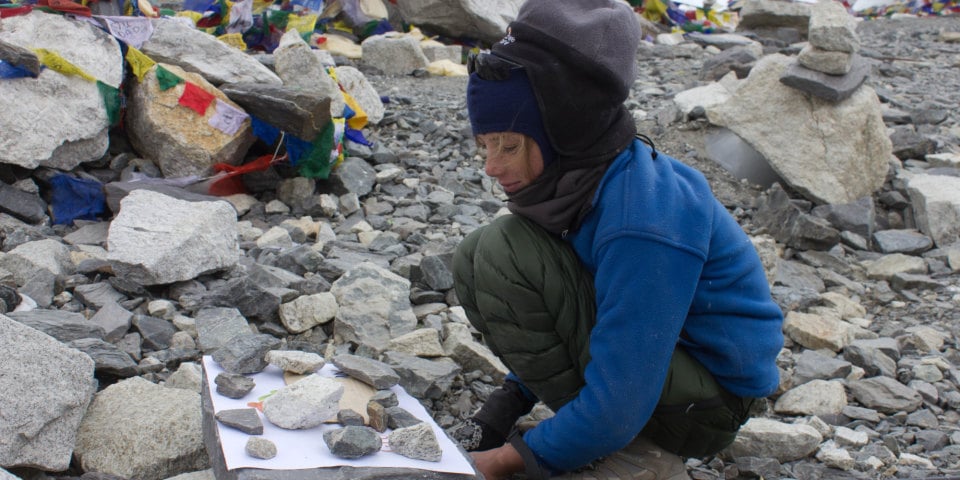
Many, many mountains are more beautiful than Everest. The “mother”, Ama Dablam, soared dazzling in the sky for much of our trek, sometimes wearing a gossamer skirt of clouds. Everest itself is an ungainly, slabby pyramid that doesn’t reveal its height. Yet the wisp of snow that flickers in the jetstream like smoke from a chimney makes its scale and strength extraordinary.
On our way down, we’d meet a man – a Sherpa by ethnicity and a sherpa by profession – who’d summited the beast eight times. What’s it like on top of the world, I asked. He thought for a while, then answered: “Cold. Very cold.”
On our way up, we’d skate on frozen lakes, drink coffee at the highest hotel in the world, explore a cottage hospital, a school and myriad monasteries. We’d watch wild goats leaping and peacocks strolling, and narrowly missing a leopard. Zac would cynically scrutinise a “Yeti skull”, and pat a baby yak with joy.
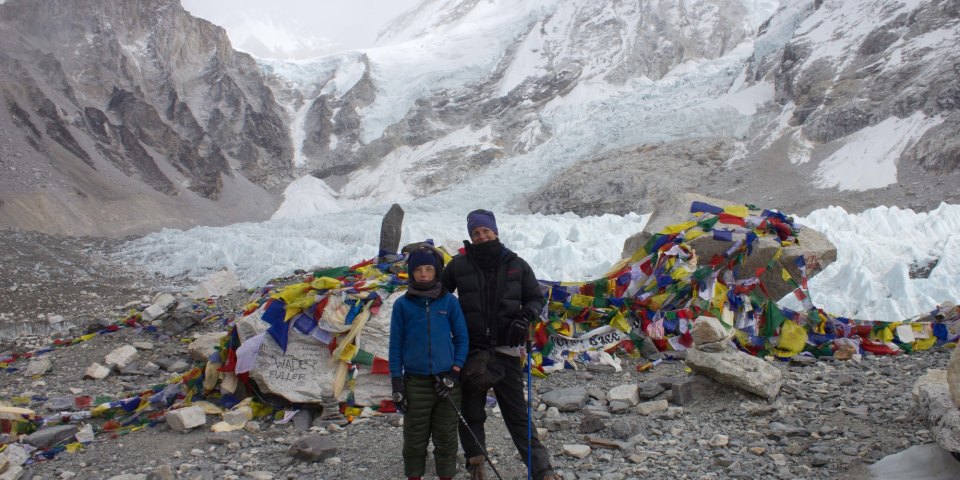
I wouldn’t say that crossing swaying cable bridges suspended many tens of metres above rocky mountain rivers cured my vertigo. But it certainly helped manage it.
And the trip provided an eye-opening insight into climate change. Some glaciers marked on our map had retreated a kilometre or more; others just looked like rubble. In lodges reliant on solar power, hydropower and yak dung fuel, electricity was a sparse and precious resource.
The night before we walked to Base Camp we watched the alpenglow descend the face of Everest and deep blue twilight darken Nuptse, a view that’s well worth trekking weeks for.
Everest Base Camp itself is an unbeautiful place – a slurry of tumbled rocks atop a half-dead glacier. The mountain itself is invisible, lurking behind the treacherous, jagged Khumbu Icefall, the place where most ascents begin. In fact, outside the climbing season, there’s only a strand of prayer flags to mark the notional spot.
And it’s here we stopped. Zac wrote a secret message on a sheet of paper, and weighed it down with stones. ‘I thought this would be an anti-climax,” he said. “But it isn’t an anti-climax at all.”
Classic Colombia
Bogota Cartagena Colombia's Coffee Triangle
- Explore historic Bogota's colonial houses and cathedrals
- Visit one of the country’s most beautiful towns, Villa de Leyva
- Stop by the UNESCO World Heritage Site of Cartagena
- Learn about the local coffee-making process at a traditional plantation
- Enjoy different flavours and local delicacies on a street food tour
Family Adventure in California
California United States of America North America
- Visit the home of the stars
- Drive along the winding Californian coast
- Explore Yosemite Valley and Lake Tahoe
- Go white water rafting on the American River
- Discovering San Francisco’s laid-back atmosphere
Madagascar Classic Flying Circuit
- Discover Spiny Forest and river views at Mandrare River Camp
- Explore coastal rainforest and beaches at Manafiafy Beach and Rainforest Lodge
- See Madagascan wildlife, including species of lemur and numerous endemic bird species
- Meet members of the Antandroy and Antanosy tribes, and learn about their customs and lifestyle
- Enjoy an excursion to Lac Anony to see greater flamingos, climb sand dunes and dip in the salty waters
